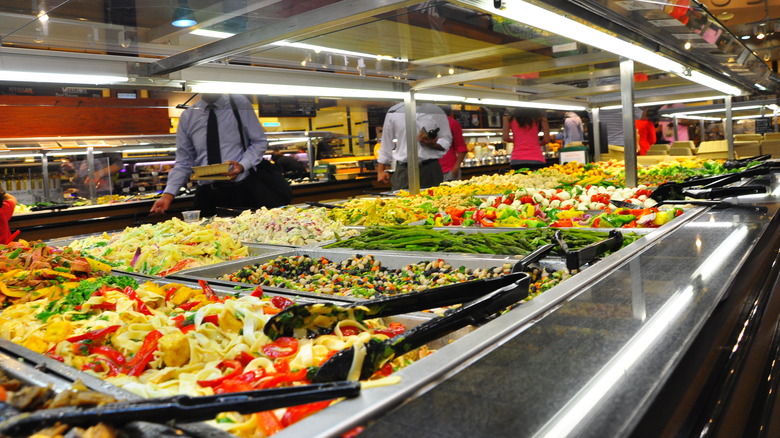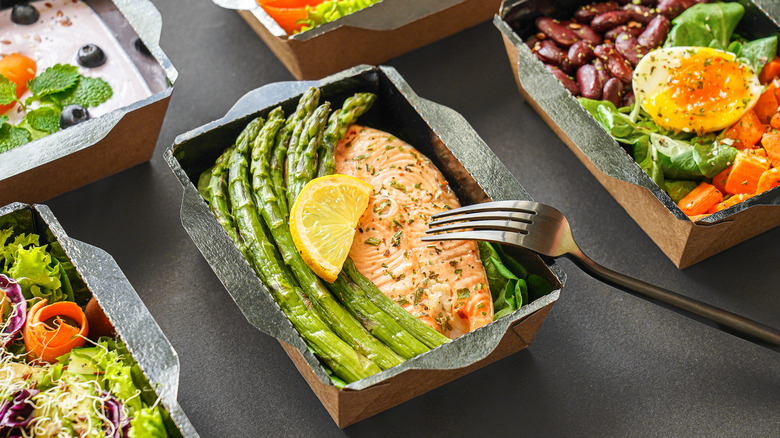What To Consider Before Buying Food From Your Grocery Store's Hot Bar
For most people, a trip to the grocery store involves buying essential food and drink items. For others, it's about making a beeline toward the hot bar for flavorful lunch and/or dinner meals. Some even make such a grocery store trip an adventurous blend of both.
To walk past a hot bar and forcefully draw your attention away from enticing food options like roasted broccoli medley or lemon pasta is a test of one's willpower. As Winsight Grocery Business explains, hot bars target our five senses, and aromas from Indian or Asian-inspired dishes are especially difficult to resist.
The source also notes that hot bars offer plenty of healthy and comfort-based options, which give consumers the freedom to mix and match proteins, starches, and vegetables together to make a complete meal. Such options range from a simple pizza or chicken parmesan, to something straight out of a restaurant, such as Vietnamese pho and artichoke flan, per Chicago Tribune.
But before you run to the nearest hot bar, there's something you should consider, and it has to do with something we all know and love: money.
Watch out for pay per pound prices
Hot bars can be found throughout grocery chains like Whole Foods Market, Seafood City, and Bristol Farms, as noted by i8tonite. But since Whole Foods can be found throughout the United States, we'll shift the focus on their hot bar prices.
Pop Sugar explains that Whole Foods charges $8.99 per pound of food (though this may vary depending on which city you're in). And since there are so many vibrant, enticing options at the hot food bar, it's a little too easy to overload your container with chicken, veggies, or mashed potatoes. As such, the scale may exceed a pound, which means you'll be paying way more than $8.99 for your meal. (In the case of the Pop Sugar writer, they ended up spending $14 on a container of mashed potatoes. This equates to approximately 1.557 pounds of mashed potatoes).
Luckily though, there are a few workarounds to this. A separate Pop Sugar source states that using a small container to buy boneless proteins (bones add unnecessary weight) will help to keep the costs down. They continue to explain that you can always make your sides, like rice or veggies, at home, but if you do want some kind of add-on, opt for the salad bar since leafy greens don't weigh that much.
While hot bars at grocery stores are an attractive option for lunch or dinner, it's important to consider the "pay per pound" costs before filling up your container.

